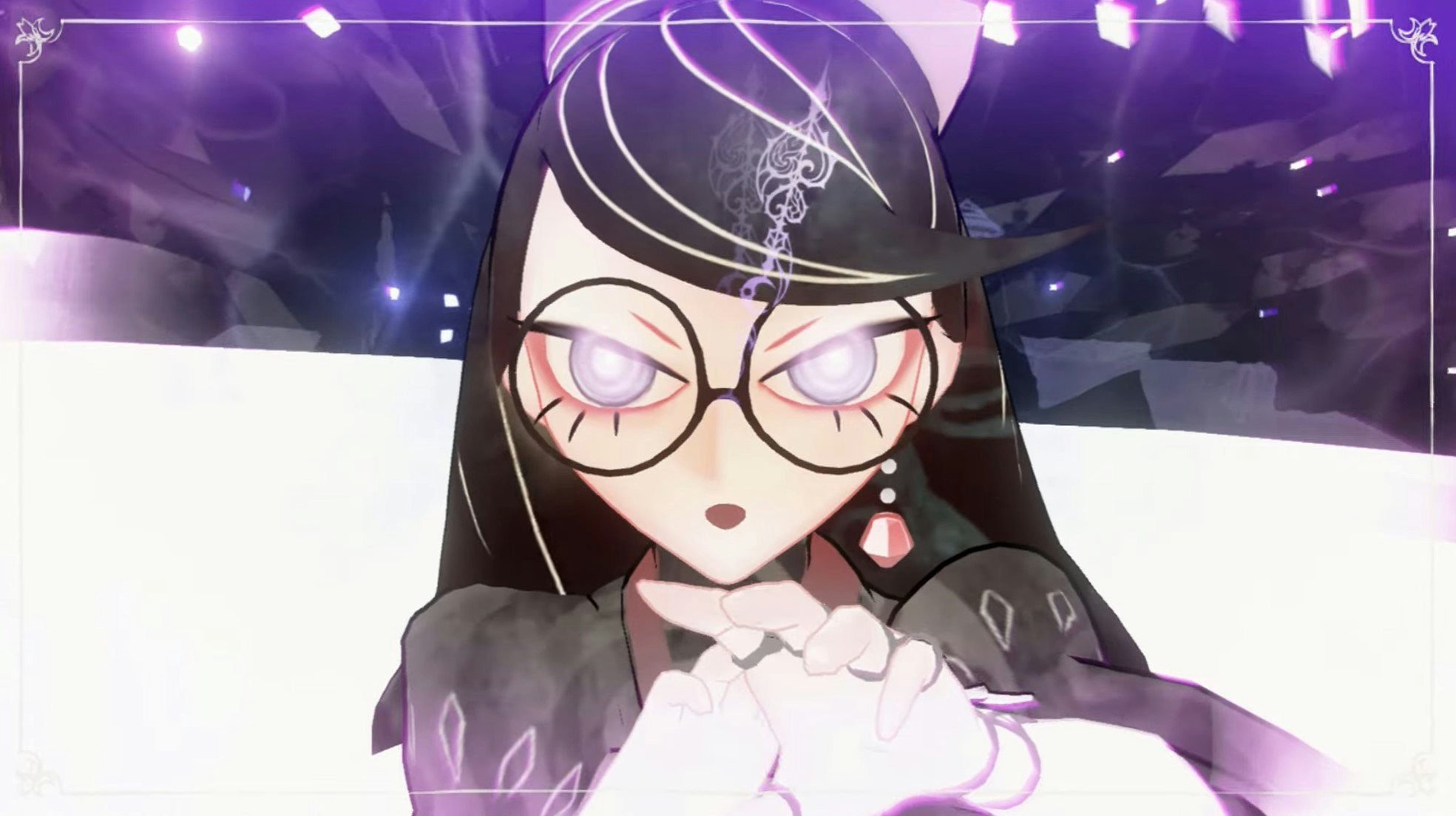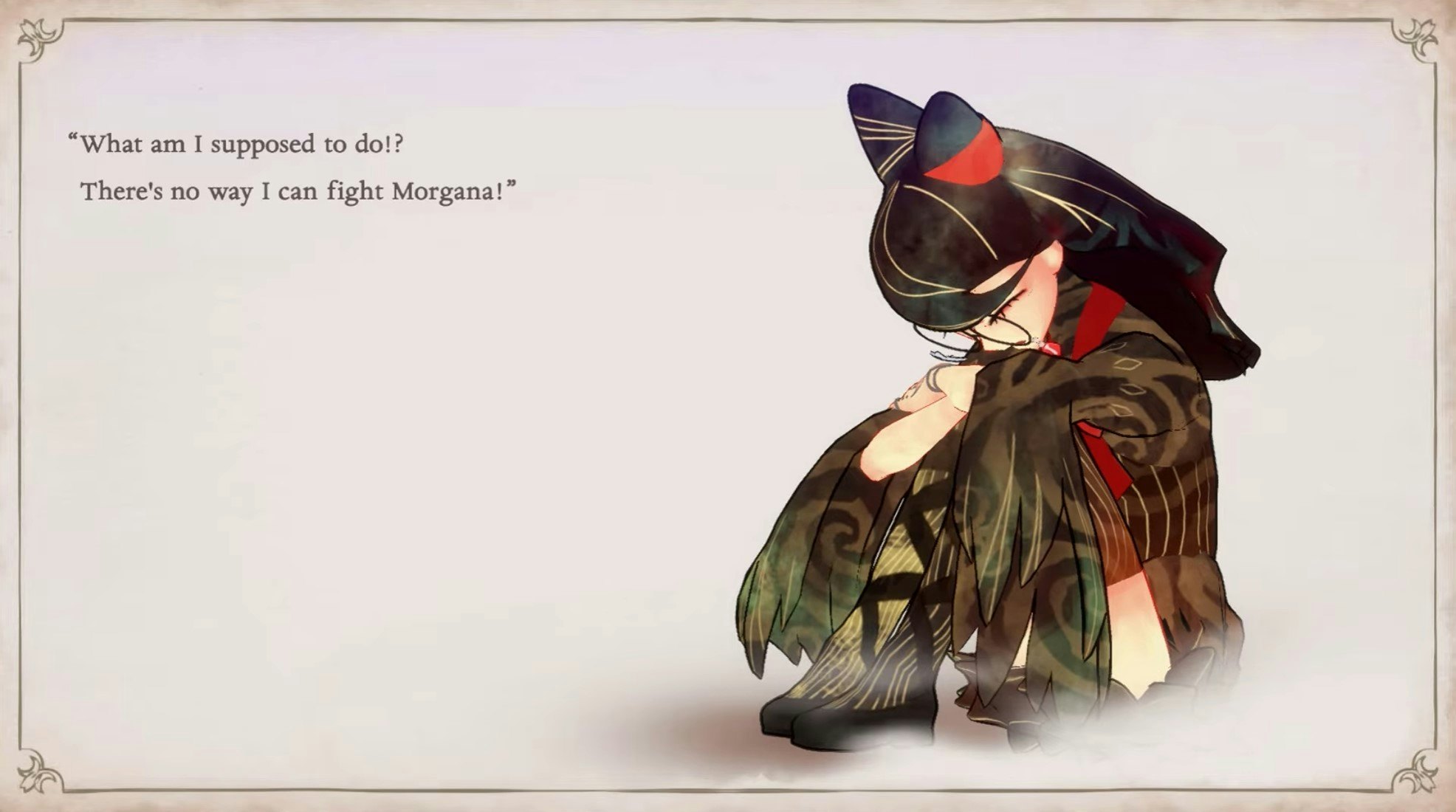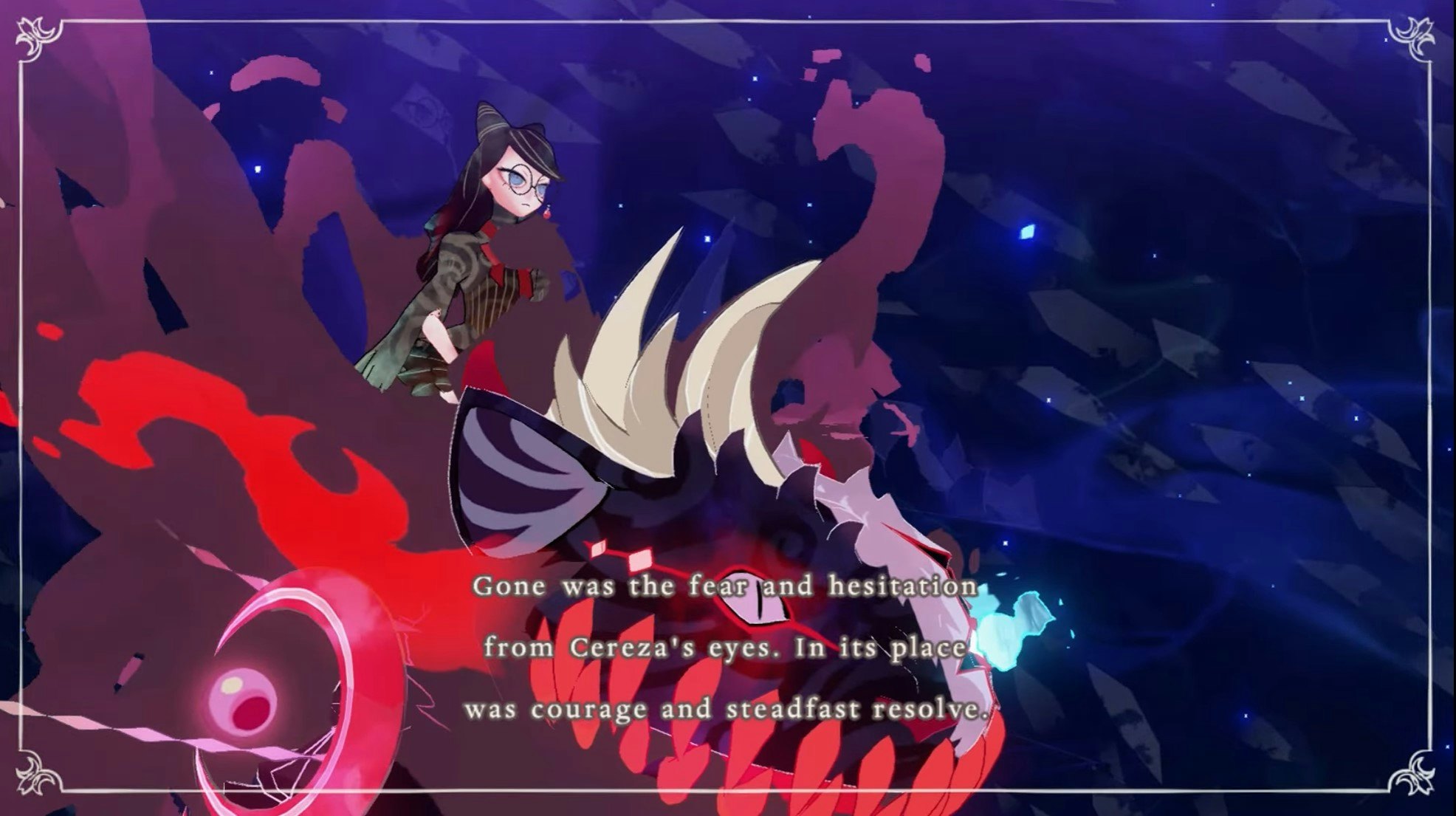
With its storybook aesthetic and puzzle platforming gameplay, there is little about Bayonetta Origins that truly connects it to the series it serves as a (loose) prequel to. Even after playing the game — and loving it — it's astounding that PlatinumGames turned one of the most overtly erotic characters in games into a family-friendly affair. At times, I found myself asking: “Does this even need to be a Bayonetta game?”
But the story of the young Cereza and the demon Cheshire ties itself to the main franchise in small ways that feel surprisingly meaningful. This comes to a head in Bayonetta Origins’ final boss fight — not only the game’s but the franchise’s biggest emotional high.
Bayonetta Origins is such a departure from the series on so many levels, narratively and mechanically. But most impressive is how it weaves threads of emotional meaning retroactively into the main series. Cereza’s newfound power becomes more than just a mechanic. Bayonetta Origins ties what may be the most used tool in the witch’s belt to the narrative weight of her journey with Cheshire.
In Bayonetta Origins, Cereza is not the powerful, confident witch that we know she grows up to be. Instead, she is unsure of herself, struggling to properly cast magic. Bayonetta Origins portrays her as a girl who cannot fend for herself, especially in a fight. That’s where the hulking demon Chesire comes in, acting as the muscle of the game. Controlling both Cereza and Cheshire with either side of the controller, players learn to take Cheshire directly into action while keeping Cereza on the edges of combat arenas so she stays alive.

For her part, Cereza supports her demonic cat by using Witch Pulse to help explore new areas in the Avalon Forest and her Thorn Bind skill to trap foes in battles. But she is nowhere near having the power we see her wield in the main series. In fact, Witch Pulse and Thorn Bind are the only powers Cereza has for the majority of the game.
After traversing the many obstacles of the Avalon Forest alongside Cheshire, Cereza comes face to face with her final opponent — her mentor Morgana. Having acted as Cereza’s mentor and maternal figure, the reveal that Morgana orchestrated Cereza’s night in the Avalon Forest for her own gain is a massive betrayal from the only person who had shown Cereza any sort of love. Worse still, Cereza and Cheshire are no match for the powers of a full-fledged witch. Cereza is barely a witch herself, and Cheshire is a newly-born demon.
With no way forward, Cereza’s first reaction is to give up. “There’s no way I can fight Morgana!” Cereza exclaims. “Well then,” responds Cheshire, “I guess that means our journey is over, hmm?” This shocks Cereza, who softly questions, “Our...journey?”
Cereza and Cheshire’s relationship was not the result of choice but of necessity. Both trapped within the forest, they (begrudgingly) teamed up to complete their individual goals. Cheshire couldn’t navigate the entirety of the forest alone and was too reckless while Cereza couldn’t defend herself against the forest’s dangers. But slowly throughout the evening (the game takes place in one long night) and through the mechanical evolution of learning to cooperate to solve puzzles, a real bond is formed.

Cheshire referring to this as “our journey” is a moment of honesty. “I never would have made it this far on my own. Thank you.” Cheshire continues. It’s the most open he has been towards Cereza this entire time.
In many ways, this is the first real bond Cereza has ever formed. It snaps her out of her despair and she promises that she will find a way forward with Cheshire, they will keep their promises to each other.
And in that moment a power unlocks within Cereza, and she gains the ability to use Witch Time. “Let’s dance,” she says, for the first (but not last) as she challenges Morgana.
In the mainline Bayonetta games, Witch Time is a mechanic that slows down everything around Bayonetta. It is typically activated by completing a perfect dodge, at which point the player can unleash a flurry of attacks on the now sloth-like opponents. It’s a key mechanic to the game’s action and mastery of it lets you rack up combos and earn a better grade at the end of each encounter. By Bayonetta 3, Witch Time feels like second nature to anyone who has spent time with the series.
The final chapter of Bayonetta Origins is titled, “A Witch is Born This Night.” Unlocking the power of Witch Time marks Cereza’s crossing of the threshold into becoming a true Umbra Witch. Through her bond with Cheshire, she defeats Morgana. After hours of seeing Cereza, we watch her transform into Bayonetta — the witch we know.

By linking Cereza’s bond to Cheshire with her ability to use Witch Time, Bayonetta Origins makes an unbreakable link between the seemingly disparate prequel and its mainline siblings. Like the best prequels, it adds context and depth to a character we already know and love. Cereza’s journey into becoming a witch adds so much dimension to who Bayonetta is. While I love the main series, Bayonetta has never been known for its emotional story. It has some great moments but the franchise’s success comes from its tightly designed action and its tongue-in-cheek campiness.
Having escaped the forest and fulfilling her promise to return Cheshire to Inferno, she makes one more promise to the Demon to become a powerful Witch and summon him again one day. She then goes to see her mother, the goal she set out to accomplish at the start of the evening.
She sees the change within her daughter and leaves her with these words, “You have grown into a splendid witch, Cereza. You are going to be just fine...” And, with the benefit of foresight, we know — because of the bond Cereza formed with Cheshire — that she will indeed be just fine.



!["[T]he First and Fifth Amendments Require ICE to Provide Information About the Whereabouts of a Detained Person"](https://images.inkl.com/s3/publisher/cover/212/reason-cover.png?w=600)



